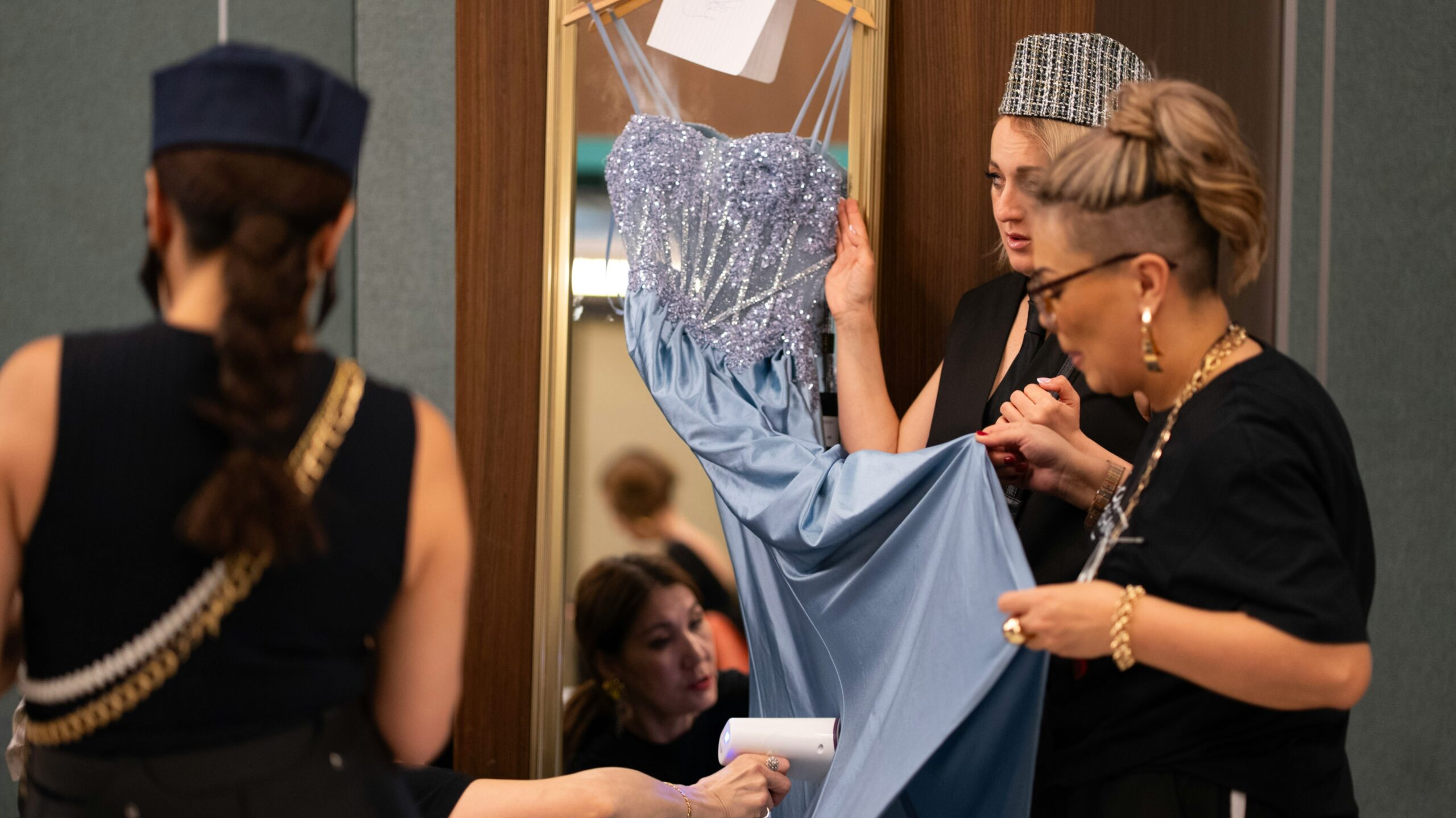Dreaming of a career in fashion? Whether you want to create stunning runway looks or launch your own clothing label, the right education is key. This comprehensive guide explores everything you need to know about clothing design degrees and fashion designer education—from top fashion schools and program options to essential courses and career paths. Learn …
Comprehensive Guide to Clothing Design Degrees and Fashion Designer Education

Contents
- 1 Is a Fashion Design Degree Necessary?
- 2 Section 1: Understanding Clothing Design and Fashion Design Degrees
- 3 Section 2: Do You Need a Degree to Become a Fashion Designer?
- 4 Section 3: Types of Fashion Design Degrees and Programs
- 5 Section 4: How to Choose the Right Fashion Design Program
- 6 Section 5: Fashion Design Degree Requirements and Duration
- 7 Section 6: What You Will Learn in Fashion Design Classes Near Me
- 8 Section 7: Career Paths After Earning a Fashion Design Degree
- 9 Section 8: Building Your Career Without a Degree
- 10 Conclusion: Is a Fashion Design Degree Right for You?
Is a Fashion Design Degree Necessary?
For many aspiring fashion designers, one of the first questions is whether a fashion designer degree or a degree in clothing design is needed to succeed in the industry. The answer depends on your goals, the kind of work you want to do, and how you prefer to learn.
This guide explores everything about fashion design programs, clothing design degrees, and education paths. Whether you’re looking for apparel design schools, fashion design bachelor degrees, or short-term clothing design classes near me, this article will help you understand your options and what to expect from fashion design majors in college.
Section 1: Understanding Clothing Design and Fashion Design Degrees
1.1 What is a Clothing Design Degree?
A clothing design degree or degree in fashion design typically covers both the creative and technical aspects of designing apparel. These degrees teach students about fashion history, textiles, garment construction, pattern making, computer-aided design (CAD), and often include internships or real-world projects.
Programs vary widely but generally fall into the following categories:
- Associate Degree (2 years) — Basic skills, suitable for entry-level positions.
- Bachelor’s Degree (3-4 years) — Comprehensive training, highly valued for professional roles.
- Master’s Degree (1-2 years) — Advanced studies and specialization.
1.2 What Does a Fashion Design Degree Program Include?
Fashion design degrees blend artistic creativity with practical skills. Typical courses include:
- Fashion illustration and sketching
- Textile science and fabric technology
- Apparel construction and pattern making
- Computer-aided fashion design (CAD)
- Fashion marketing and merchandising
- History of fashion and cultural studies
- Business skills for fashion entrepreneurs
Section 2: Do You Need a Degree to Become a Fashion Designer?
2.1 Is a Fashion Designer Degree Needed?
While many successful designers are self-taught or learn through apprenticeships, having a formal fashion designer education provides structured learning, networking, and industry credibility.
Pros of having a degree:
- Access to internships and industry connections
- Exposure to a variety of skills and disciplines
- Strong portfolio development support
- Better job prospects and higher starting salaries
Cons:
- Cost and time commitment
- Industry acceptance of non-degree paths through experience and creativity
2.2 Alternatives to a Degree
If traditional college programs are not feasible, consider:
- Fashion design trade schools
- Online courses and certifications
- Workshops and short-term clothing design classes
- Self-study with the help of free fashion design apps and resources
Section 3: Types of Fashion Design Degrees and Programs
3.1 Bachelor of Design in Fashion / Bachelor of Fashion Design Technology
The most common and sought-after degree for aspiring designers is the Bachelor of Design in Fashion or Bachelor of Fashion Design Technology. This 3-4 year undergraduate program provides a comprehensive education covering all aspects of fashion design, from conceptualization to production.
3.2 Fashion Design Major vs. Apparel Design Major
- Fashion Design Major: Focuses on the creative design of garments and collections.
- Apparel Design Major: Often more technical, emphasizing garment construction, pattern making, and manufacturing.
Both can lead to successful careers, but your choice depends on your interests.
3.3 Fashion Design Vocational and Trade Schools
These schools offer shorter, skill-focused programs that emphasize hands-on training. Ideal for students who want to learn practical skills quickly or supplement their knowledge.
3.4 Notable Fashion Design Schools in the US and Worldwide
- Fashion Institute of Technology (FIT), New York
- Parsons School of Design, New York
- Savannah College of Art and Design (SCAD), Georgia
- London College of Fashion, UK
- Polimoda, Italy
Some also offer campuses or programs in other cities like Chicago or Los Angeles, increasing accessibility.
Section 4: How to Choose the Right Fashion Design Program
4.1 Accreditation and Reputation
Choose schools with accredited fashion programs that have strong industry ties.
4.2 Curriculum and Specializations
Look for programs that offer courses aligned with your career goals—whether it’s haute couture, sustainable fashion, or technical apparel design.
4.3 Location and Internship Opportunities
Fashion capitals like New York, Los Angeles, and Chicago offer better access to internships and job markets.
4.4 Cost and Financial Aid
Factor in tuition fees, scholarships, and financial aid availability.
Section 5: Fashion Design Degree Requirements and Duration
5.1 Common Requirements
- High school diploma or equivalent
- Portfolio submission showcasing sketches and designs
- Letters of recommendation and essays for competitive programs
5.2 Duration of Fashion School
Most bachelor’s degrees take 3-4 years. Associate degrees or diplomas can take 1-2 years. Some schools also offer accelerated or part-time options.
Section 6: What You Will Learn in Fashion Design Classes Near Me
Many cities offer clothing design classes near me that provide flexible learning options:
- Introduction to fashion illustration
- Draping and sewing techniques
- Digital fashion design using CAD software
- Textile science
- Trend forecasting and analysis
Community colleges and art schools often provide these affordable classes.
Section 7: Career Paths After Earning a Fashion Design Degree
7.1 Fashion Designer
Create original clothing, accessories, and footwear lines.
7.2 Apparel Product Developer
Work on turning designs into actual products with production teams.
7.3 Fashion Illustrator
Produce detailed drawings for design concepts and marketing.
7.4 Fashion Merchandiser or Buyer
Manage product selection and retail strategy.
7.5 Fashion Entrepreneur
Launch your own clothing line or boutique.
Section 8: Building Your Career Without a Degree
Even without a formal degree, success in fashion is possible by:
- Building a strong portfolio with original work
- Gaining experience through internships and freelance work
- Leveraging social media to showcase your style
- Learning digital tools such as fashion design apps and clothing creator software
Conclusion: Is a Fashion Design Degree Right for You?
Obtaining a clothing design degree or a fashion design bachelor degree provides a solid foundation for a career in fashion, with structured learning, valuable connections, and skill development. However, it is not the only path to success. Depending on your resources, goals, and learning preferences, you can pursue traditional college programs, vocational schools, or self-taught routes.
No matter which path you choose, continuous learning, creativity, and passion for fashion are essential to thrive in this dynamic and exciting industry.

Shikha Singh
Keep in touch with our news & offers
Subscribe to Our Newsletter
Thank you for subscribing to the newsletter.
Oops. Something went wrong. Please try again later.






